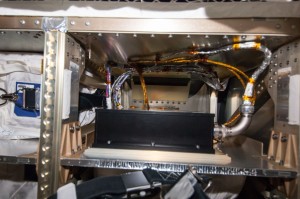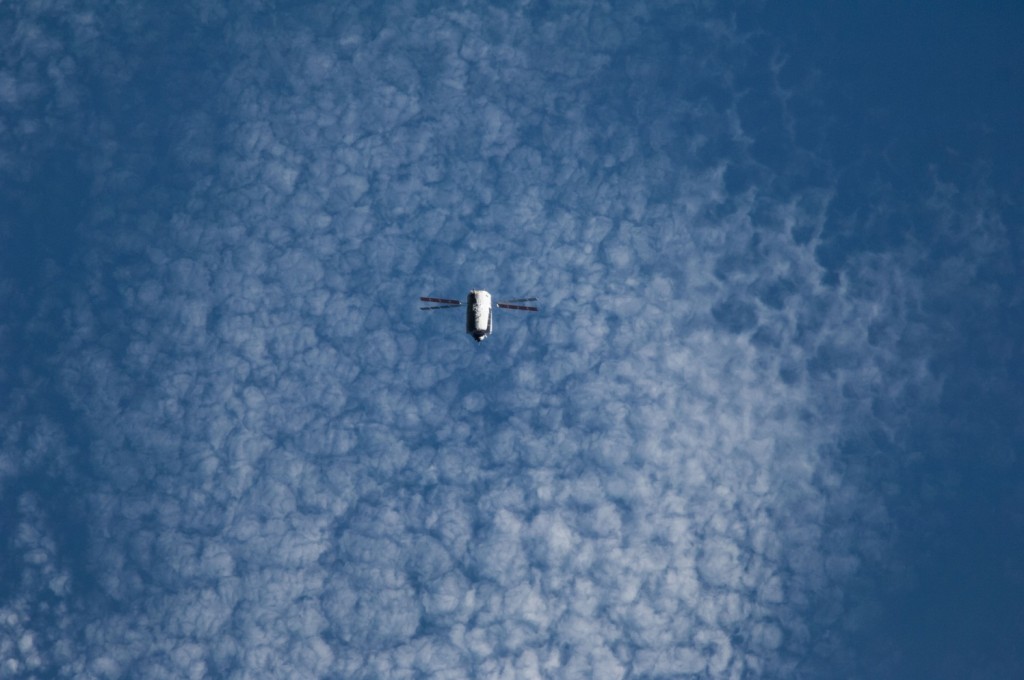The Laser Infra-Red Imaging Sensors (LIRIS) demonstration, developed by Airbus for ESA tested new rendezvous sensors during a special flyunder manoeuvre 8 August, four days before ATV Georges Lemaître docked with the International Space Station.
The LIRIS sensors were activated during ATV-5’s mission and monitored at the ATV Control Cetnre with experts on the LIRIS team confirming that the sensors were working correctly.
The data from LIRIS was not used by Georges Lemaître itself nor sent to ground control straight away as a large amount of data was generated. Instead data was saved on dedicated recorders. ATV-5 relied on the usual optical sensors (videometers and telegoniometers) for navigation to achieve a perfect docking with the International Space Station – an accuracy of less than 5 mm!
After docking and hatch opening the LIRIS recorders were retrieved from the cargo by ESA astronaut Alexander Gerst 29 August and sent to Earth in the Soyuz 38S spacecraft 11 September. The recorders were retrieved 30September with JenaOptronik traking care of the LIDAR sensor and SODERN taking care of the Infra-Red and visible cameras.
We confirmed that the LIRIS demonstrator worked as planned during
ATV-5’s mission by comparing the data to known ATV telemetries and the amount of data recovered on the recorders.
- The infrared and visible light cameras behaved correctly during flyunder and rendezvous. They recorded two hours during the flyunder and more than three hours during the rendezvous. The Station was captured by infrared and visible cameras during the demonstration.
- The LIDAR also behaved correctly during Rendezvous, LIDAR data havebeen recorded from 3.5 km up to docking for more than three hours.
Based on these elements, LIRIS demonstration has been declared successful.






 Automated Transfer Vehicle page
Automated Transfer Vehicle page ATV blog archive
ATV blog archive
Discussion: no comments